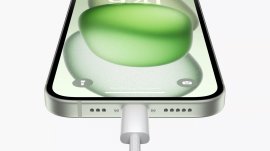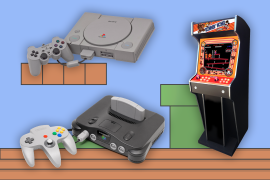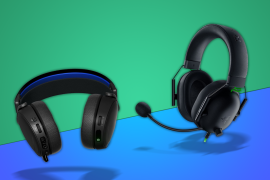Best premium laptop or ultrabook 2023: top-end notebooks rated
Super premium Ultrabooks and MacBooks for work, play and everything else from $1000/£1000

Looking for a powerful laptop you can take with you anywhere? Good news, portability fans: loads of those exist. From hybrid workhorses to gaming machines with serious grunt, the best premium laptops make it easy to get stuff done on the run. And while their flip-top form remains fundamentally true to that of their forebears, the nicest notebooks today are lighter, brighter and faster than ever.
So whether you’re typing on the train, coding in a café or procrastinating at your place of work, the right notebook will make life a whole lot easier.
But what if you’re not sure how to choose? Helpful as ever, we’ve already flipped, clicked and carried all of the latest and best laptops for every budget – then narrowed that list to our top premium notebook picks in the guide below.
What is the best premium laptop?
We think the best premium laptop for most people is the MacBook Air M2 (check price). Apple’s M1-powered MacBook Air proved that raw power and streamlined packaging are a killer combo. Its successor takes that approach a step further: with a revamped chassis and M2 silicon inside, it sets a new benchmark for all premium laptops.
Other premium laptop recommendations
If the MacBook Air M2 isn’t for you, then here are five other premium laptop recommendations:
- Best premium Windows laptop: Dell XPS 13 (9310) (check price)
Dell’s XPS machines have long dominated the ultra-portable laptop market. But the latest edition steps things up another notch: besides a travel-friendly form factor and solid performance potential, the 9310 can also be configured with a stunning OLED display. - Best premium laptop for creatives: Apple MacBook Pro 14in (M2 Pro) (check price)
Putting the ‘pro’ back in MacBook Pro, Apple’s M2 Pro and Max are serious pieces of silicon. The MacBook Pro 14in is leagues ahead when it comes to tasks that benefit from boosted multi-core performance and GPU grunt – think video production and 3D rendering. - Best premium laptop for gaming: Razer Blade 14 (check price)
Razer’s first 14in laptop is also its first to ship with an AMD processor. And with Nvidia GeForce RTX 3060 graphics providing added gaming grunt, it strikes a superb balance between power and portability. - Best budget premium laptop: Apple MacBook Air (M1) (buy now)
Yes, budget premium is an oxymoron, but it is possible to get a premium experience without spending thousands. While it’s not the latest MacBook Air, the M1 is still a powerful, lightweight laptop with all-day battery life, brilliant build quality and a superb display. - Best lightweight premium laptop: LG Gram (check price)
The Gram 16 delivers in all departments: longevity is superb, the display immersive and the shell lightweight. In fact, at just 1.19kg, it’s the lightest 16in laptop in the world
The best premium laptops you can buy today:
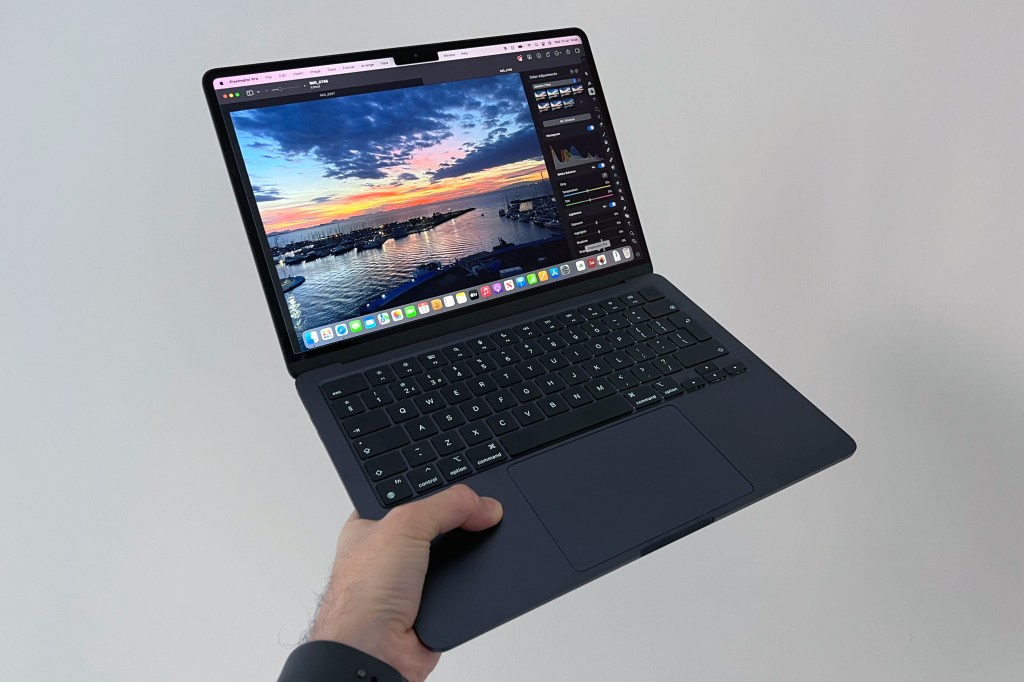
1. MacBook Air (M2)
Stuff Says…
A meaningful revamp of packaging and performance, the M2 Air costs more than previous editions, but also sets a new yardstick for premium laptops
Apple’s M1-powered MacBook Air (below) proved that raw power and streamlined packaging is a killer combo. Its successor takes that approach a step further: with a revamped chassis and M2 silicon inside, it sets a new benchmark for all premium laptops.
The 13in model adopts the same footprint as before, ditching Apple’s classic wedge in favour of a flat chassis that’s fantastic to type on. Refined bezels give the unit a neat, uncluttered look, while a notch increases screen real estate by flanking the webcam with the toolbar. Brightness is boosted and audio is leagues ahead of the M1 Air, although camera quality remains dismal. There’s now a 15in version available for those who want a bring a bigger screen with them on the move, and while we’re yet to test it, you can expect an otherwise similar experience.
Performance is superlative for mainstream tasks, leaving its predecessor for dust. The lack of fan can throttle sustained workloads, but few users will need more raw power. Battery life is similarly impressive, to the point that we routinely forgot to plug it in. When we did, the return of MagSafe was a welcome one.
There’s no avoiding Apple’s price hike, which takes the M2 Air firmly out of entry-level territory. But unless you’ve got very specific performance needs – such as support for multiple external displays – this is the best Mac (and laptop) for most people.
- Read more: MacBook Air (M2) review
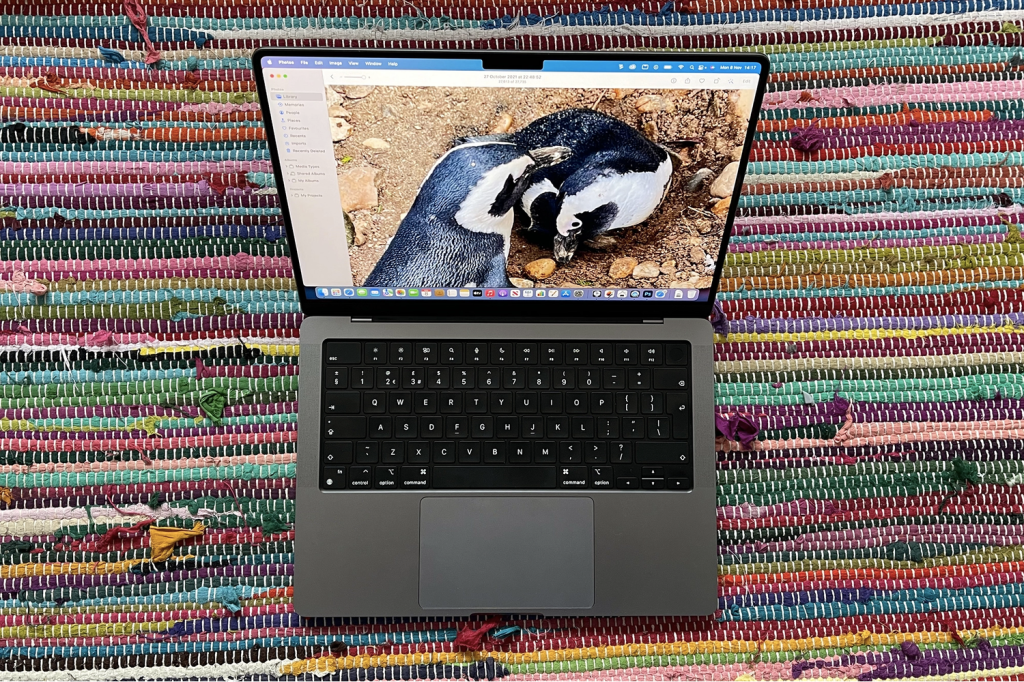
2. Apple MacBook Pro 14in (M2 Pro)
Stuff Says…
With ports, power and pixels to spare, this MacBook is properly Pro – and its price tag won’t let you forget it
Putting the ‘pro’ back in MacBook Pro, Apple’s M2 Pro and Max are serious pieces of silicon. For basic tasks, it’s more than most people will ever need. But provided you work in a field that can take advantage of the Pro’s power – and you’re flush enough to foot the bill – it’s proof that Apple knows how to make a hot chip.
Borne out by benchmarks and real-world use, the MacBook Pro 14in is leagues ahead when it comes to tasks that benefit from boosted multi-core performance and GPU grunt – think video production and 3D rendering. It’s also blessed with reliable all-day battery life and a proper wish-list of ports.
Chunkier and heavier than its 13in predecessor – with an extra 200g on the scales – it’s a solid package that clearly means business. The trackpad is massive but reliable, while the keyboard is a joy to type on. With the menu bar spanning the screen notch up top, you’re left with a full 16:10 display area below. And what an area that is: with rich blacks, vivid colour and up to 1600 nits of brightness for HDR content, the mini-LED panel is gorgeous. The six-speaker system has oomph to match, too.
- Read more: Apple MacBook Pro 14in (M1 Pro) review
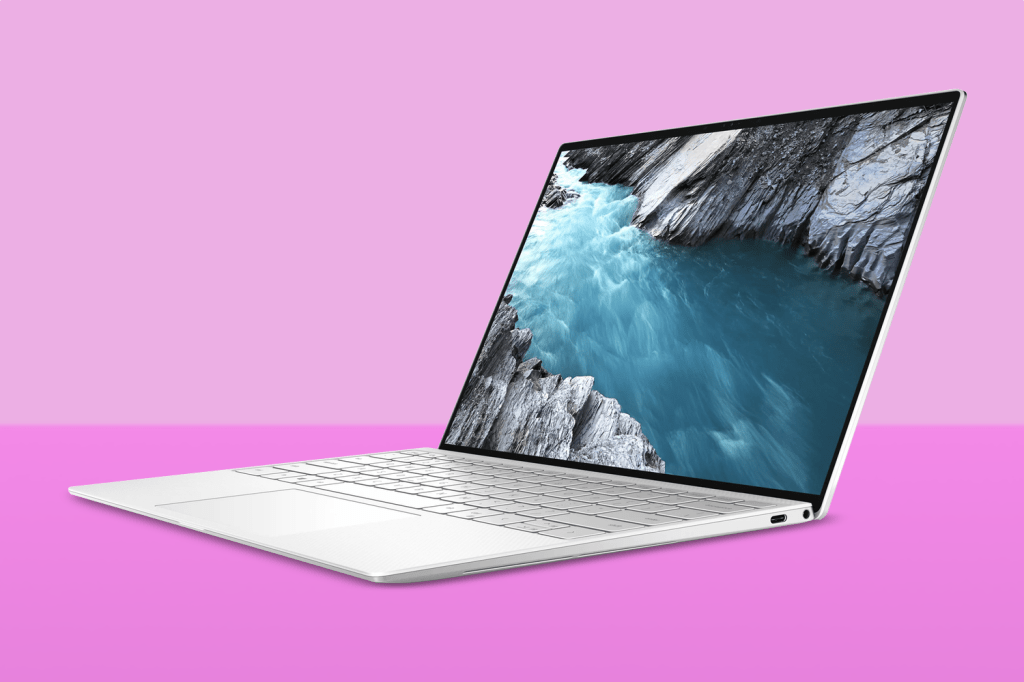
3. Dell XPS 13 (9310)
Stuff Says…
Beautifully built and perfect for a backpack, Dell’s premium ultra-portable is superb in OLED spec – provided you don’t need lots of ports
Dell’s XPS machines have long dominated the ultra-portable laptop market. But the latest edition steps things up another notch: besides a travel-friendly form factor and solid performance potential, the 9310 can also be configured with a stunning OLED display.
Streamlined by design, the XPS 13 is the epitome of what used to be called an Ultrabook; super slim at 1.48mm, relatively light at 1.27kg and blessed with slender bezels. The whole package feels well-built and reassuringly solid – and the premium impression continues with the satisfyingly responsive keyboard and trackpad. The only compromises? The 720p webcam could be sharper, while two Thunderbolt 4 ports feels a little miserly.
Opting for that OLED panel does reduce battery life, and you’ll get higher brightness from the LCD screens. But the OLED simply can’t be topped for colour coverage and depth: it’s a gorgeous thing to work with and watch on.
Performance depends on how you spec it, but 11th gen Intel silicon means the XPS 13 is no slouch in any setup. There’s more than enough power on tap to deal speedily with daily demands and creative workflows. Only if you task it with taxing games or 3D rendering is there any risk that the lack of discrete graphics hardware will hold you back.

4. Apple MacBook Air (M1)
Stuff Says…
Blazing speeds, beefy battery and a beautiful display: the M1-powered MacBook Air is still one of the best all-round laptops you can get for less than a grand
Want a powerful, lightweight laptop with all-day battery life, brilliant build quality and a superb display? While it’s not the latest laptop to come out of Cupertino, Apple’s MacBook Air from 2020 remains a slender contender for the premium crown.
Since usurped by the M2 edition which now tops this list, the first Air to use Apple’s own silicon remains a masterpiece. Featuring the breakthrough M1 chip, it’s the computing equivalent of a speedboat. Fanless and fast, this MacBook Air is magnificent for multi-tasking. There is still a ceiling on its capabilities, but one that only power video editors are really at any risk of hitting.
Yes, the webcam could be sharper, the bezels slimmer and the port array more generous. But the rest of the MacBook Air M1’s feature set is otherwise just as impressive as its core performance. Battery life is heroic, the Magic Keyboard supremely responsive and the 13.3in Retina display deliciously sharp and vibrant. Plus the whole lot is bundled up in a featherweight aluminium wedge that’s as slimline as ever.
- Read more: Apple MacBook Air M1 review
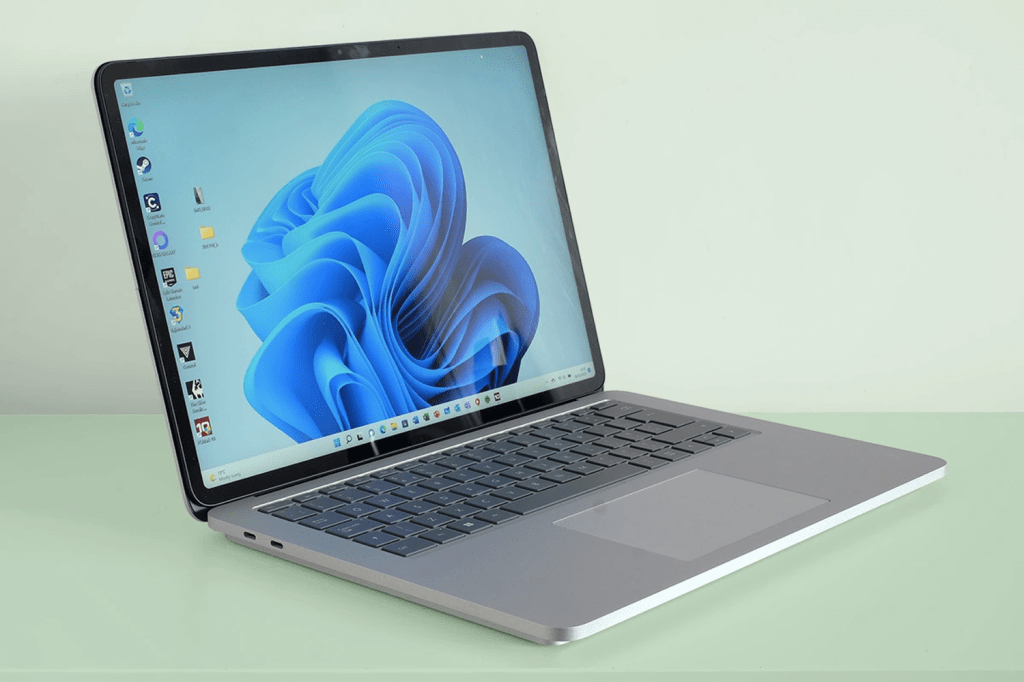
5. Microsoft Surface Laptop Studio
Stuff Says…
Designed for designers, Microsoft’s magnesium machine isn’t the most powerful, but it is a beautifully executed lesson in hinged elegance
Disguised as a standard laptop, Microsoft’s Surface Laptop Studio is a refined hybrid for designers. A hinge behind the screen allows it to pivot forward into two positions: an angled stance that covers the keyboard or a flat, tablet-style setup. Unlike its Surface Studio sibling, though, it can’t be set to a low tilt for doodling.
A masterpiece in magnesium, Microsoft’s nailed the industrial design of the Surface Laptop Studio. It’s not the lightest at 1.8kg, nor is it the narrowest 14.4in notebook you can buy – but the build quality is easily on a par with Apple’s best efforts.
A 3:2 aspect ratio makes the display perfect for productivity and full-screen creativity. It can’t rival Apple’s mini-LED MacBooks, but it’s bright for an LCD and offers excellent colour depth. It also supports Microsoft’s Surface Slim Pen 2 stylus.
Performance could be better for the price. The base model is perfectly fine for digital design work, but video editors or 3D modellers would need to measure their expectations of Intel’s Xe graphics. So it’s not a powerhouse, but it is a beautiful thing to behold and use. And the 18-hour battery life means you can do that for a full day.
- Read more: Microsoft Surface Laptop Studio review
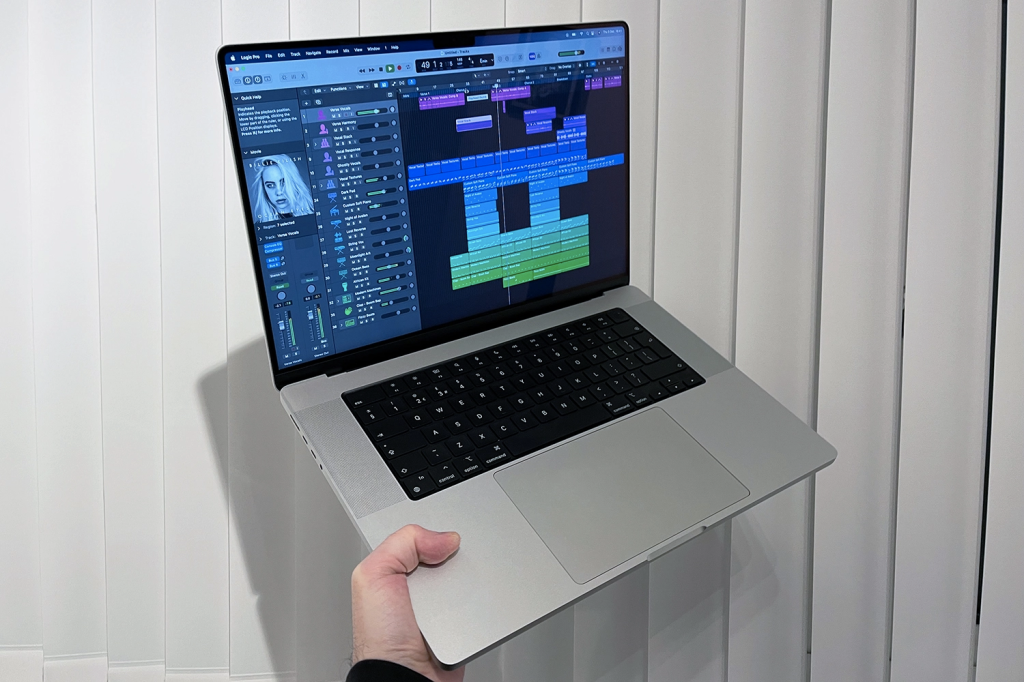
6. Apple MacBook Pro 16in (M2 Max)
Stuff Says…
This maxed-out MacBook is big, expensive and overkill for all but the hungriest of power users. But it’s also a hugely impressive piece of computing kit
In modern MacBook land, there are several tiers of Pro. The 16in model with M2 Max silicon? Very much at the top. It’s a world-beating workhorse with serious performance chops. And it will absolutely hoof your wallet.
Aping MacBook Pros of the past, there’s a boxiness to the shell that sets it apart from its predecessor. While the extra half-kilo yields longer battery life, the heft won’t suit everyone. But it’s not meant to.
Neither is the performance: for most people, the M1 Max is overkill. It takes specific workloads to utilise the immense multi-core power. Task it with video encoding, for example, and it can better a Mac Pro by processing seven streams of 8K ProRes footage simultaneously.
If portability is your priority, pick the MacBook Pro 14in (above). And if you want a powerful middle ground, spec the MacBook Pro 16in with an M2 Pro chip. But only desktop-grade grunt will do, this is the Pro to pick.
- Read more: Apple MacBook Pro 16in (M2 Max) review
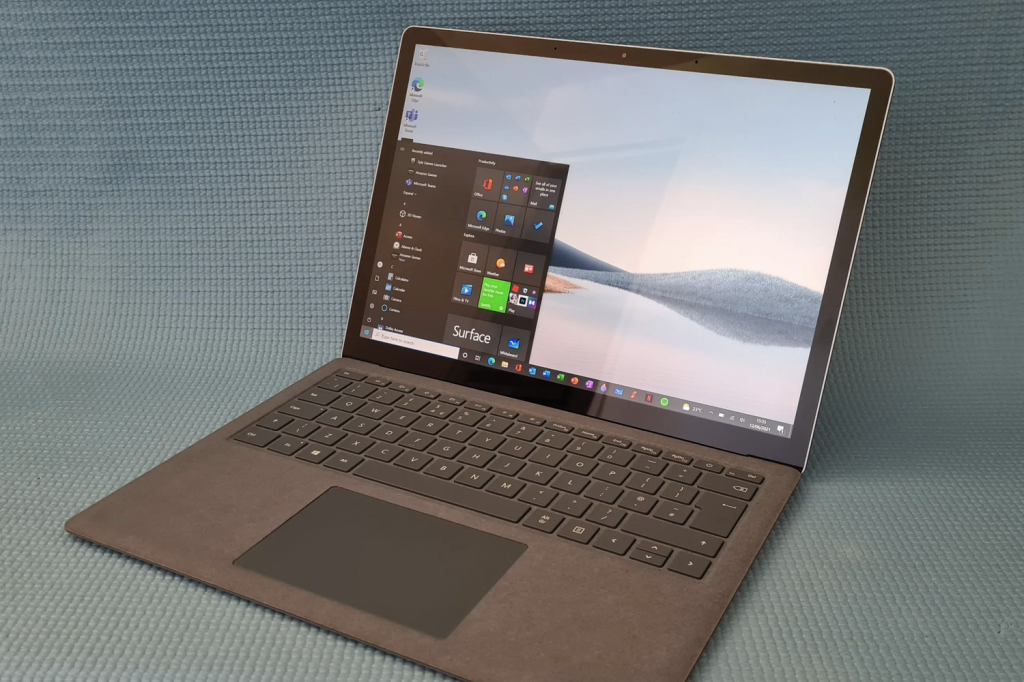
7. Microsoft Surface Laptop 5
Stuff Says…
Updated silicon gives Microsoft’s ultraportable a performance and battery boost, in a package that can continue to trade blows with a MacBook Air
An update rather than an all-new model, the refreshed Surface Laptop is one of the best premium Windows Ultrabook laptops you can buy. Geared towards productivity, the 3:2 aspect ratio of its sharp 13.5in display is ideal for documents, while the keyboard and trackpad are satisfyingly responsive. Pick the option topped with Alcantara and your palms will thank you
Boosts to performance and battery life mean the Surface Laptop 5 can comfortably tackle heavier workloads, or last an entire work day away from the mains – with some juice left for a Netflix binge once you clock off. Something the punchy Atmos-optimised speakers can assist with.
Slimmer bezels would be nice, as would a slimmer price tag for the top-spec options. A paucity of ports also limits connectivity. But go for the mainstream variant and you’re still getting a lightweight, understated Windows notebook with MacBook build quality, day-long battery and versatile potential.
- Read more: Microsoft Surface Laptop 4 review
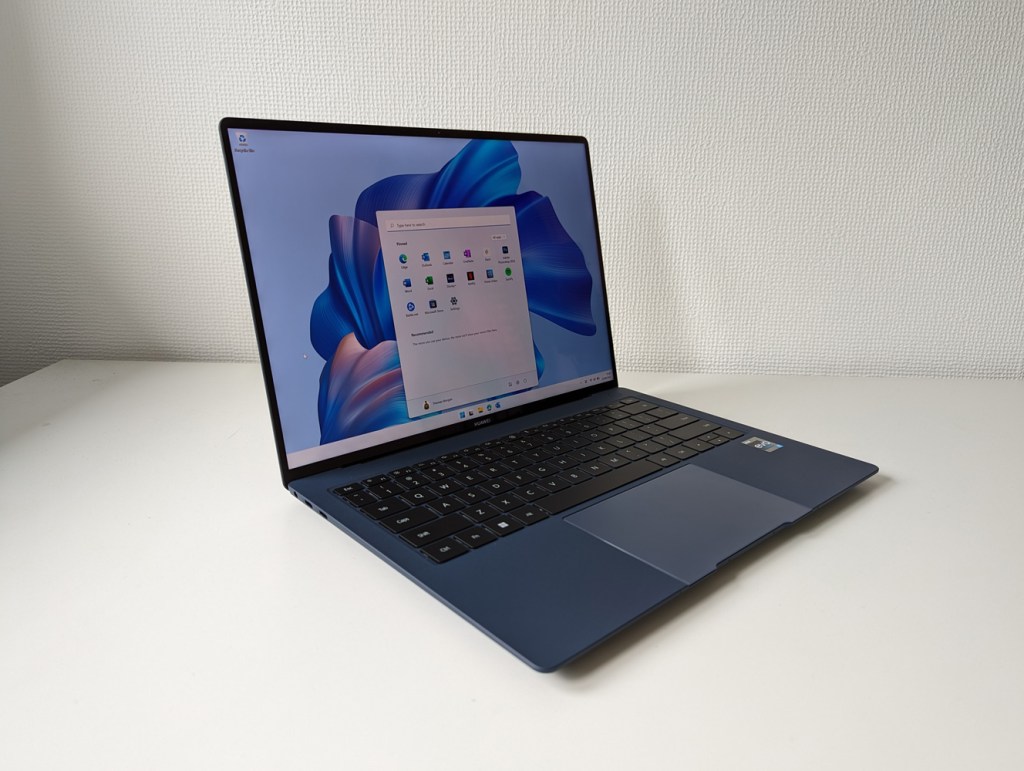
8. Huawei MateBook X Pro (2022)
Stuff Says…
A slick, speedy ultraportable that’s a pleasure to work with and a wonder to watch on, even if battery life remains a sore spot
Hot on the heels of the previous edition, the second Matebook X Pro of 2022 features beefier 12th-gen Intel silicon. From the outside, little has changed: it’s still a sliver of a thing at 15.5mm slim and 1.38kg light. An aluminium finish gives it serious MacBook vibes, as does the keyboard setup. It remains a pleasure to type on, while the expansive touchpad offers frictionless scrolling and well-judged sensitivity.
As before, slender bezels let the Matebook X Pro fit a 14.2in screen where most laptops would only manage a 13-incher, plus a webcam for good measure. Excellent viewing angles, decent brightness and 90Hz refresh rates complement the LCD panel’s detailed resolution and HDR support. It might not offer the outright punch of OLED, but colour accuracy is top notch, making it a winner for video addicts.
On the job, the 12-core CPU’s extra muscle slashes the time required to crunch numbers and blast through tasks. Battery life is still a weak spot – averaging eight hours – while the lack of a dedicated GPU does torpedo any ideas of using it for serious rendering work. But if you want a premium workhorse to get things done in style, the Pro definitely delivers.
- Read more: Huawei MateBook X Pro (2022) review
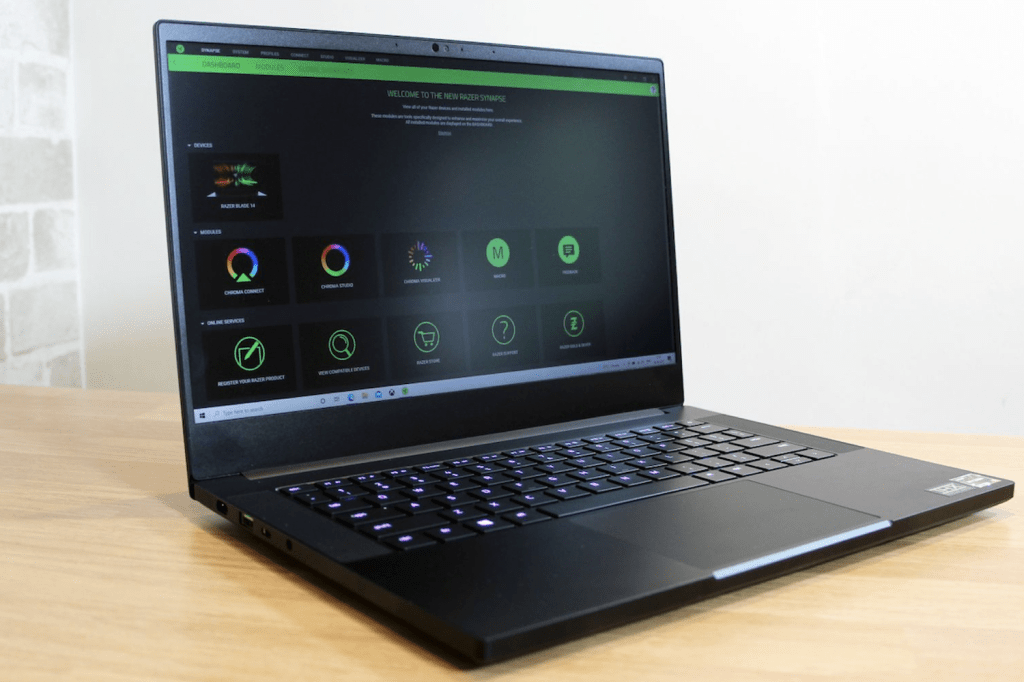
9. Razer Blade 14
Stuff Says…
Razer’s first 14in laptop isn’t without compromise, but it’s also lightweight, robust and great for gaming on the go
Razer’s first 14in laptop is also its first to ship with an AMD processor. And with Nvidia GeForce RTX 3060 graphics providing added gaming grunt, it strikes a superb balance between power and portability.
Like the rest of Razer’s notebooks, the Blade 14 comes clad in CNC-milled aluminium. And at 16.8mm slim and 1.78kg light, it cuts an understated picture next to your average beefcake gaming laptop. The 14in display ships with a Full HD resolution and 144Hz refresh rates as standard. You can opt for higher specs, but the default setup still delivers lashings of depth.
Yes, you’ll get more grunt from larger laptops with beefier cores. The underside can also run hot under load, while 90-minute gaming battery life is average, rather than impressive. But with powerful hardware crammed into a shell this streamlined, compromises are inevitable – and the sacrifices made by the Blade 14 are remarkably few.
- Read more: Razer Blade 14 review
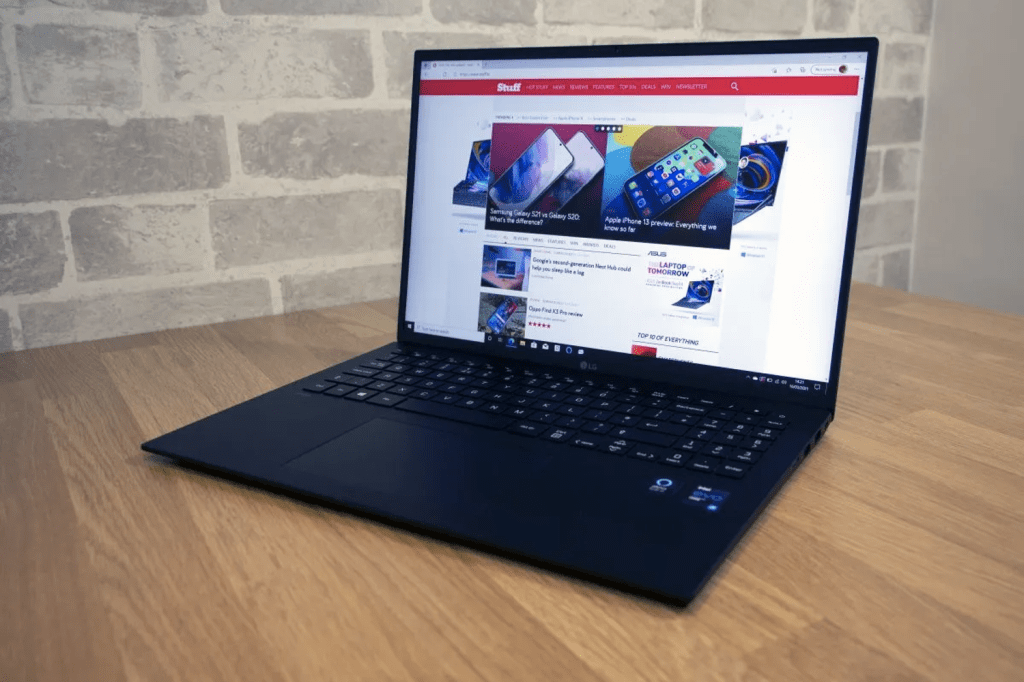
10. LG Gram 16
Stuff Says…
A big-screen machine with mammoth battery life, the Gram 16 is a featherweight winner for everyday computing
LG’s Gram laptops are all about streamlined designs, big screens and stellar battery life. The Gram 16 delivers in all departments: longevity is superb, the display immersive and the shell lightweight. In fact, at just 1.19kg, it’s the lightest 16in laptop in the world (at the time of writing).
Bolstering those already impressive credentials is a solid set of features. The keyboard is snappy to tap, the speakers reasonable enough and the 16:10 aspect ratio ideal for streaming. Connectivity is similarly comprehensive and, despite the featherweight frame, the battery can surpass a massive 21 hours.
It’s not the top laptop when it comes to outright performance, though. Sure, it’s no slouch, but gaming and intensive image editing will be better handled by beefier, faster rivals. Then again, for a full day of mainstream tasks, the Gram 16 will still deliver without complaint. And it won’t be beaten on battery life.
- Read more: LG Gram 16 review
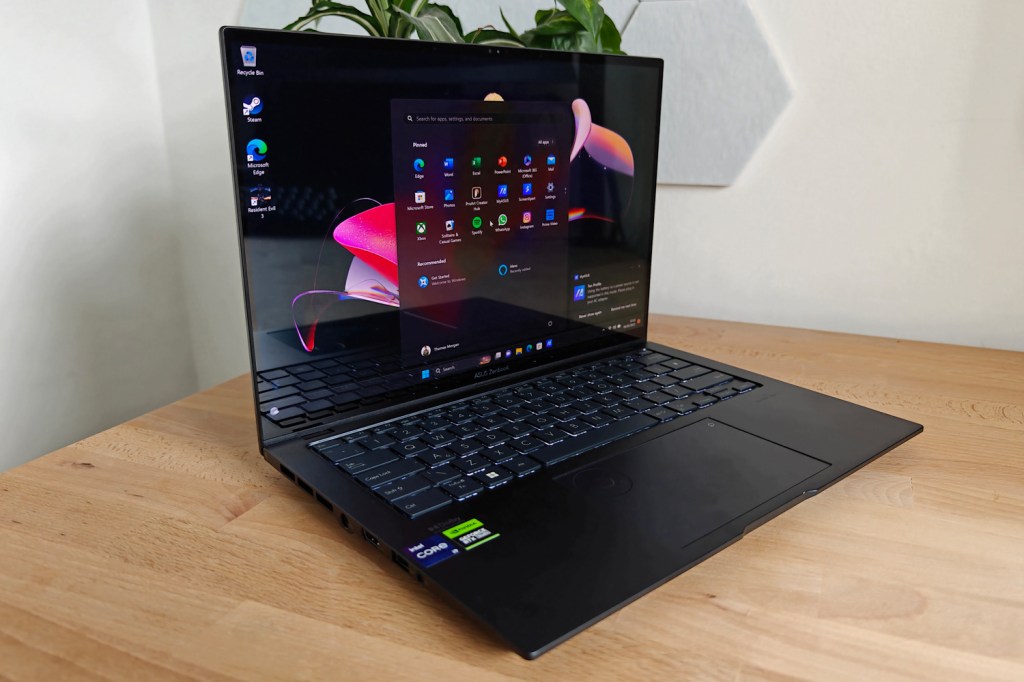
11. Asus Zenbook Pro 14 OLED
Stuff Says…
A creator-focused portable powerhouse that can also manage some serious gaming – as long as you don’t mind lots of fan noise
There’s no shortage of portable and powerful laptops doing the rounds, but the Zenbook Pro 14 OLED has to be one of the most well-rounded. It’s aimed primarily at creative types, who insist on Studio drivers for the Nvidia dedicated graphics card – these are confirmed to play nicely with industry-standard software, y’see – but there’s nothing stopping you from booting up a game once your work shift is over.
The 14.5in ultraportable weighs much less than 2kg, will easily slip into a backpack, and should last a solid seven or eight hours on battery power alone if you stick to sensible tasks, so you don’t have to stay tethered to a plug socket. When you do, though, the Zenbook Pro 14 OLED can unleash the full potential of its 13th-Gen Intel Core i9 processor and RTX 4070 GPU – demolishing desktop tasks and making short work of 3D renders.
To top it off there’s a stunning 14.5in OLED display, with skinny bezels, a sharp 2K resolution and rapid 120Hz refresh rates. Fully loaded it’s a seriously expensive laptop, but it also brings serious power.
- Read more: Asus Zenbook Pro 14 OLED review

Huawei Matebook 16S
Stuff Says…
Lightweight and well-built, a sizeable screen and stellar battery life put this premium machine on the shortlist for office workers who don’t need dedicated graphics
For a go-anywhere machine with a sizeable screen, the Matebook 16S gets plenty right. It’s well-built, benefits from a punchy display, and can be optioned with hardware to embarrass many desktops. It also represents excellent value when compared to the M1 MacBook.
Slim enough at 17.8mm, the Matebook 16S is also impressively wieldy for a 16in laptop. Its metallic matte finish is achieved with ceramic sandblasting, and the result is a device that feels suitably premium. Worker bees will appreciated the large display’s 3:2 aspect ratio and, while there’s no HDR support, its 100% sRGB coverage provides fantastic colour accuracy.
Opt for the Intel Core i9 processor and you’ll find its performance potential is rarely tested in the real world. With no option to spec a dedicated GPU, the i7 is the smarter chip choice for most: it’s more affordable yet still mighty quick, provided your tasks don’t require a potent graphics engine. Battery life is respectably tidy too, yielding up to six hours of productivity when you take the Matebook away from your desk.
- Read more: Huawei Matebook 16S review
Also check out: Which tablet should you buy? Find out in Stuff’s guide to the best tablets
What is a premium laptop?
Our selection spans slimline ultraportable and Ultrabooks, big-screen entertainment devices as well as MacBooks, covering both Windows and macOS. The main thing about a premium laptop is that it has the latest or recent generation hardware. Often they’re ultraportable, but not always. Intel used to call ultraportable laptops Ultrabooks, but this has now been replaced by the Intel Evo specification which promises fast Wi-Fi chips and all-day battery life.

